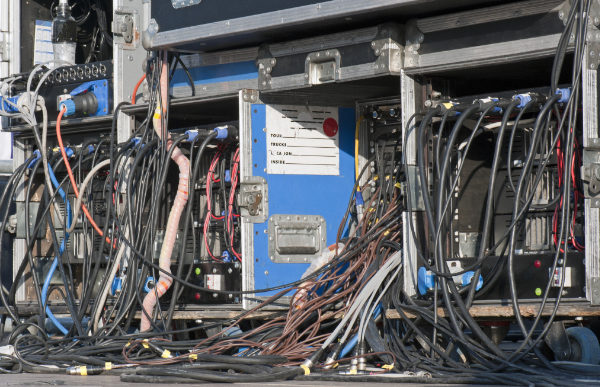When we started Propared, one of the most important questions we asked ourselves was, “why do this?”. If you’re going to start a new business and throw every ounce of your energy into it, then you need to be as certain as possible that people are going to find what you’re building to be valuable.
Luckily, we knew from our time as production managers, that there wasn’t a good system for handling the complex scheduling of live events. So it was a pretty easy choice for us to dive in and start making Propared.
But what about other parts of the production management workflow? What else do we spend lots of time on that aren’t well spoken to with our current tools? The more we thought about it, the more we realized that we need to devote some serious attention to the management of inventory and physical resources in live events.
What is inventory management software?
Scheduling can be boiled down to some very simple questions like: Who needs to be where?, When?, and What do they need to be doing? In the same way, inventory management can be simply stated with questions like: What do we need?, What do we have?, How can we best put it to use?, and What do we do if we don’t have what we need?
Traditional inventory management revolves around the movement of stuff (finished products or materials) in and out of a storage space. There are some great software products out there that speak to this need.
Inventory management software is built for businesses whose primary revenue driver is the movement of stuff. It’s how they make their money. Take rental shops as an example. Because the movement of stuff is so critical, they’re going to spend thousands of dollars on software and hire many employees devoted solely to the management of that stuff. The software they adopt will be hyper-focused on the movement of the inventory in and out of the storage space. In them, you see terms like bar-codes, scanners, throughput, age management, procurement, carrying cost, and supply chain.
Why doesn’t this work for live events?
As is the case with scheduling, the idea of inventory management in live event production is, in some ways, a little simpler, but in other ways more nuanced.
For producers, venues, schools, and production companies, our primary focal point is the shows or the events we are working on. Inventory management is only a variable in the overall equation.
This makes management of the inventory more complicated. It’s not just about whether or not a projector is in stock. We need to know what days it’s been reserved for, which venue it’s been sent to, who reserved it, and whether or not I can borrow it for a couple of days. Also, if a client calls to book an event, we’d like to tell them how many projectors we can promise given both a set of dates and all the other events happening on that day that may have already claimed projectors.
It gets even better from here. That projector and the rest of your inventory, are usually only part of all the things needed to make a show happen. You might also be renting additional lights from PRG, buying wood from Home Depot, and borrowing props from the theater across town.
This clearly goes well beyond the need to scan things in and out. We need something more akin to a show-builder that also takes into account our existing inventory.
Sounds like you’ve got something amazing planned. Gonna tell us about it?
Now that we’ve gotten to the heart of the issue, we can begin working on a solution. We have some working designs that we’re pretty happy with at this point. Thanks to additional support from Acuity Brands and Smith School of Business at Queen’s University, we are going to begin development of this new module as soon as we finish our major update of the Propared infrastructure coming out this spring.
We’re incredibly excited to introduce this module (we’re calling it “Things”). Once it’s integrated alongside our scheduling features, you’ll have another tool that speaks to your needs in ways more specific to our needs in live events. Plus, this will give us a natural place to begin looking at budgeting challenges (also a critical component of our daily work!).
Stay tuned for more information coming soon!




